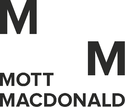Data from a Building Survey at 16-17 Melton Street, Camden, 2020-2021 (HS2 Phase One)
High Speed Two Ltd., Mott MacDonald, 2023. https://doi.org/10.5284/1119137. How to cite using this DOI
- HS2 Phase One: London to West Midlands Historic Environment Digital Archive
- Curated Collection: A Digital Archive of Britain's Railway History
Data copyright © High Speed Two Ltd. unless otherwise stated
This work is licensed under a The Open Government Licence (OGL).
Primary contact
High Speed Two Ltd.
2 Snowhill
Queensway
Birmingham
B4 6GA
United Kingdom
Tel: 08081 434 434
Resource identifiers
- ADS Collection: 4254
- DOI:https://doi.org/10.5284/1119137
- How to cite using this DOI
Introduction

The archive collection comprises a digital archive only. This includes text, including the Project Plan, Location Specific Written Scheme of Investigation (LSWSI) and Historic Building Recording; and raster images, comprising photographs selected to support the historic building recording.
Project Summary
16-17 Melton Street is a former London Underground entrance and substation situated south of the junction of Drummond and Melton Streets, opposite Euston Station. It served the Charing Cross, Euston and Hampstead Railway between 1907 and 1914 and was subsequently converted for use as a ventilation and electricity substation for the London Underground network.
Recording has been undertaken in accordance with a project plan (Document number: 1EW02-CSJ-EV-PLN-S003-000078) and LSWSI (Document Number: 1EW02-CSJ-EV-PRO-S003-000031) which has been included in this archive, and HS2 Technical Standards (Specification for Historic Environment Investigations, Document number HS2-HS2-EV-STD-000-000035) have been adhered to during the recording exercise. In addition, the recording was undertaken in accordance with Historic England’s Understanding Historic Buildings guidance (Historic England, 2016) and the Standard and guidance for the archaeological investigation and recording of standing buildings or structures (CIfA, updated 2020). A building recording of Level 2 survey was required for the asset, as defined in Understanding Historic Buildings: A guide to good recording practice (HE, 2016). This provided a sufficient level of recording to both assess the character and use, and any changes thereof, of the Building over its lifetime, including a photographic record of the Building and its immediate setting.
Re-Use Value Statement
This archive provides a comprehensive descriptive, analytical and visual record of 16-17 Melton Street (former LUL entrance) and its setting as of 2020.
The archive can provide information for any future research regarding the asset, or the link between the development of underground railways and broader changes in the historic landscape, architectural artefacts of twentieth-century design with a social agenda, key changes in technology of underground railway infrastructure and how these changes influenced the distribution of goods or the movement of people including the development of the Underground Electric Railways of London (UERL), from an accurate record of the asset, which is otherwise inaccessible to the public due to its demolition.






